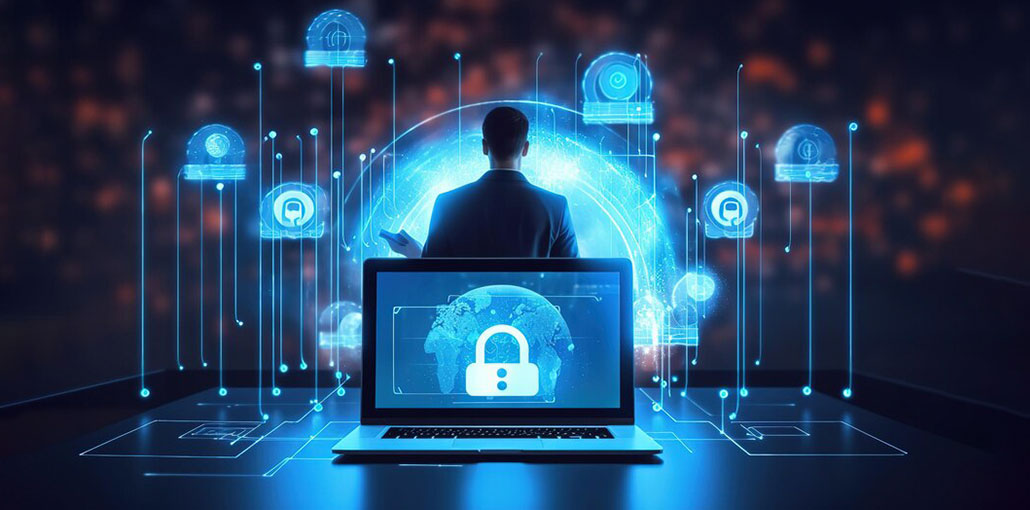In today’s digital age cybersecurity is a major issue due to the advanced nature of cyber-attacks and cyber-crimes. The development of new technologies offers many advantages and disadvantages. On the other hand, they can be used to perpetrate cyber-related crimes, making the threats we face more advanced. But, when used in a skilled manner they have the potential to transform cybersecurity. In particular, using the ability to develop and create new material, generative AI can be utilized to detect anomalies anticipate risks, and enhance security infrastructure overall. The advancement of emerging technologies is expected to play an important impact on our strategies for cybersecurity as we progress through this new digital landscape. Ten emerging technologies that could alter cybersecurity will be reviewed. The following are some of them:
Top 10 Revolutionary Cybersecurity Technology Changing The Future
1. Quantum Cryptography
The technology is able to encrypt data and transmit it securely by utilizing the ideas of quantum physics. Quantum key distribution (QKD) is a method to generate and distribute randomly generated keys, which are not subject to manipulation or intercept is the foundation of quantum cryptography. Communications and sensitive information are protected by sturdier security and privacy due to quantum cryptography.
2. Artificial Intelligence (AI )
AI is a type of technology that allows machines and systems to execute tasks like reasoning, learning, making decisions, or natural language processing, which normally require human intelligence. Artificial intelligence (AI) could be able to enhance cybersecurity by automating tasks like threat detection and analysis, as well as response and even prevention. AI can also be taught from patterns and data in order to identify vulnerabilities, abnormalities, and threats.
Also read: Cyber Trust Mark: A New Way to Tell if Your IoT Device Is Secure
3. Blockchain
An electronic ledger for transactions authenticated and logged by a network of nodes is created using blockchain technology. It provides the ability to decentralize, immutability, and transparency for the storage and exchange of data blockchain technology can boost security. Blockchain technology can help with digital signatures, smart contracts identity management, and secure authentication are all enabled by blockchain technology.
4. Biometrics
Utilizing the individual’s physical or psychological characteristics to verify their identity and grant access to services or systems is referred to as biometrics. By enhancing or replacing traditional authentication methods such as PINs and passwords biometrics improve security. In addition, biometrics can help stop fraud, spoofing, or identity theft.
5. Edge Computing
Data processing occurring at the edge of networks, closer to the data’s origin or destination, is referred to as edge computing. By reducing latency, bandwidth, as well as the cost of data transfer edge computing can improve security. Because edge computing minimizes the risk of being exposed to central or external systems, it is also able to offer greater security and control over information.
6. Zero Trust
Based on the zero-trust security principle no entity or device that is outside or within the network is trusting in default. Before granting access or granting permission it is essential to conduct regular verification and verification of every request and transaction. By limiting lateral movement unintentional access, as well as data breaches, zero trust could increase security.
7. Cloud Security
A security technology referred to by the name of “cloud security” protects against attacks on the data and applications hosted on a cloud platform. The encryption of data firewalls, antivirus software, firewalls, backups and disaster recovery, access, and identity management, and monitoring compliance are just a few examples of the methods and tools that are employed to protect cloud users. Cloud security offers scalability as well as flexibility and efficacy for the protection of data as well as service provision, cloud security could increase security.
8. 5G Networks
Next-generation wireless communications called 5G networks are superior to 4G networks in terms speed in latency, capacity, and speed. By facilitating more reliable and secure data transmission 5G networks could enhance cybersecurity, especially for crucial applications such as transport, smart cities, and healthcare. Blockchain technology, AI, as well as IoT are only a few of the innovations that 5G networks are able to assist with.
Also read: 10 Best Security Awareness Training Platforms For Business
9. Cybersecurity Awareness
In order to prevent and limit cybersecurity attacks, cybersecurity awareness rather than being a technological component in and of itself, is an essential human component. The capacity of individuals as well as companies to guard against cyber-attacks and protect others is referred to as cyber awareness. Through ensuring a culture of security best practices, for example, using secure passwords, and software updates as well as avoiding phishing emails and reporting on events that are related to cybersecurity, awareness can improve security.
10. Cyber Insurance
One type of insurance that shields you from damage and losses caused by cyberattacks can be described as cyber insurance. Companies that suffer reputational or financial setbacks because of cyberattacks like ransomware and denial-of-service attacks as well as data breaches may profit from cyber security insurance. Furthermore, cyber insurance may motivate businesses to establish more secure standards and procedures.










Leave a comment